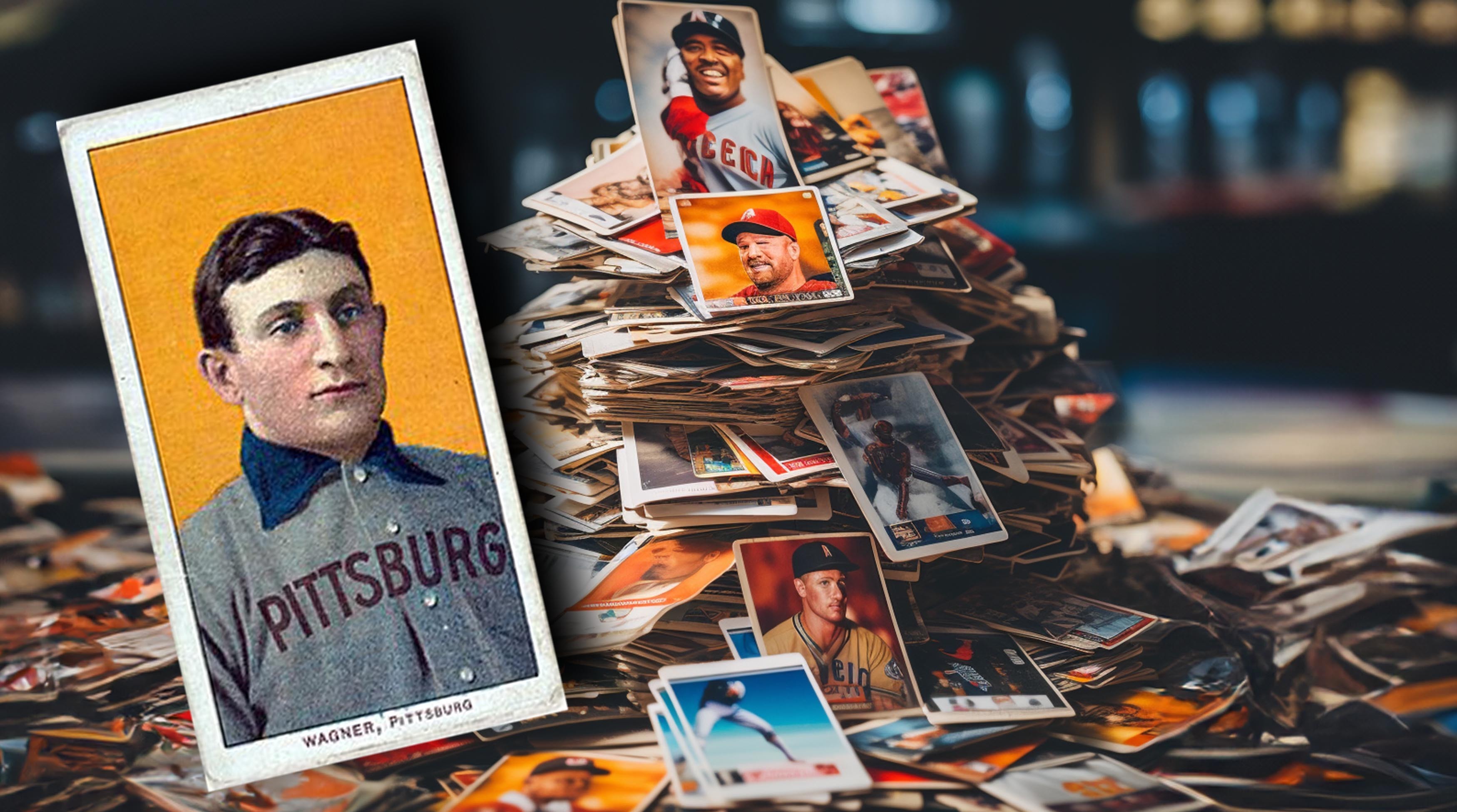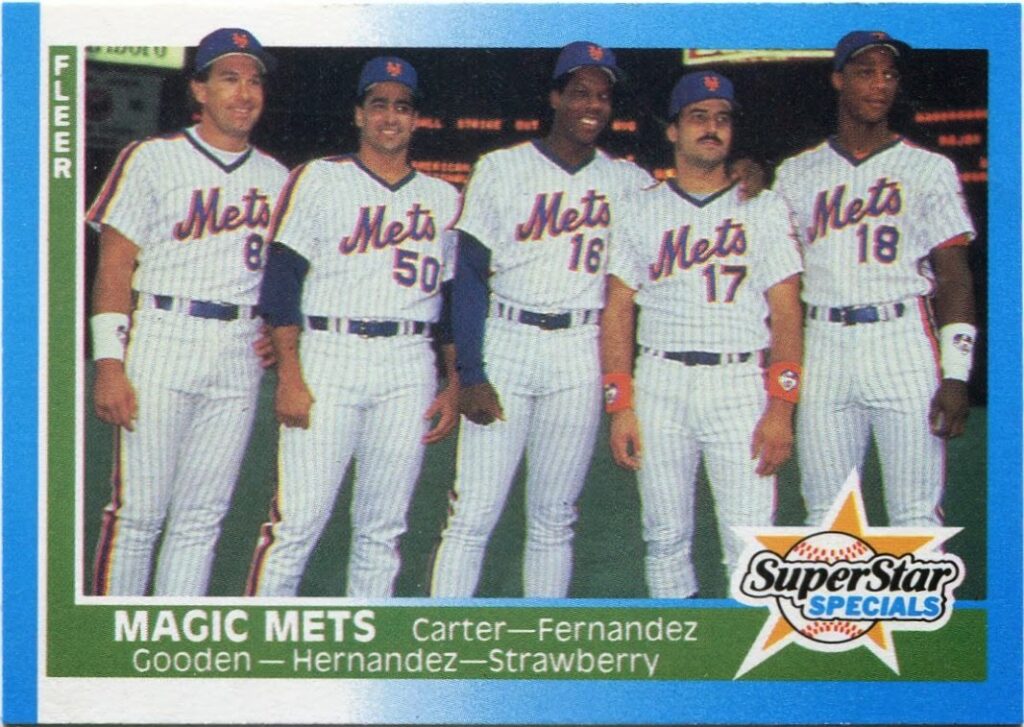Honus Wagner T206 : Scandal & The Journey of a Baseball Card
Collectibles teach us that the value of a thing is whatever someone is willing to pay for it. And this is especially true for baseball cards. Literal pieces of paper are sometimes worth millions. This story follows the journey of the “Gretzky T206 Wagner,” a rare baseball card worth millions and the scandal attached to the card. Also stay tuned for the quick quiz with Comedian Dan Wilbur!

The most famous baseball card in all of history is probably the Honus Wagner T206 from 1909. We’ll talk about the card and its history, but before we do that, you might be surprised to learn that the most famous baseball card in the world isn’t the most valuable.
The most valuable baseball card in the world is from 1952. The Topps Mickey Mantle card from 1952. Mantle had only played for one year in 1952 and this was the very first year for Topps baseball cards, a company that is still in business today and sees something like $35M in annual revenue. Previous to that, they had been known as American Leaf Tobacco cards. The Topps 1952 set didn’t sell as well as they wanted, so one of their executives decided to dump all of the extra cards into the Atlantic Ocean. As a result, he created one of the most in-demand trading cards in the world. The Mickey Mantle card from that set is incredibly rare. There are only 9 of them in existence that the Professional Sports Authenticator grades as 9 or better. In 2022, someone paid $12.6 million dollars for this baseball card.
The value of a thing is determined by what people are willing to pay for it. In 1989, I was thrilled to get a Ken Griffey Jr. card in a pack of Upper Deck baseball cards. This is a baseball card that’s often listed in the hundreds of dollars – and some even in the thousands. But I wasn’t a Seattle Mariners fan. I was a New York Mets fan. And my older brother had this card known as the Magic Mets: a card from 1987 that featured all my favorite players: Dwight Gooden, Darryl Strawberry, Howard Carter, Keith Hernandez and Sid Fernandez. So he was more than happy to trade me for my Ken Griffey Jr. card. It was a horrible trade. That Magic Mets card isn’t worth more than a few bucks. But to me, it was worth trading away one of the most sought after cards of the 1980s.

Baseball card values are determined by a whole host of factors, rarity being chief among them, but condition being another important factor. One of the rarest cards in existence is known as the T206 Honus Wagner.
The T206 refers to a set that was produced from 1909 to 1911 by the American Tobacco Company. It would be included with cigarettes and loose tobacco in 16 different brands. Cigarette companies at the time included colorful cards with the packs to help hold their shape. These wouldn’t just be sports figures. They were also made of animals, celebrities, Native Americans, and city views. Sports heroes were a natural fit for depicting on cards. But when they included Honus Wagner, who was a shortstop for the pirates, he asked them to stop. Wagner didn’t like the idea of kids buying packs of cigarettes to get a card featuring their favorite player. Some have put forward an alternate theory that he wanted more compensation from the American Tobacco Company. Regardless of the reason, the result was that only somewhere between 50-200 of these tobacco cards were created. The rest of the set was issued in the 10s to hundreds of thousands of each card. So by comparison, the Wagner card was incredibly rare.
The card itself is a drawn picture of the Shortstop. His hair is parted down the middle and he’s wearing a gray Pittsburgh Pirates jersey, with the old spelling, which drops the “H” in Pittsburgh. This is interesting for a few reasons, but mostly because it was an artist embellishment. The Pirates uniforms didn’t have Pittsburg written on them. The background is a bright yellow or orange and the white border of the card has the text “Wagner, Pittsburg” at the bottom. These tobacco cards were a smaller size than the typical baseball cards we’re used to seeing. It was just 1 and 7/16 inches wide by 2 and ⅝ inches tall. The backs usually featured one of the 16 brands of tobacco.
At this point in the story, we shift focus to hockey legend Wayne Gretzky.
The star hockey player retired in 1999 after 20 years of playing in the NHL. His net worth today is something like $250 million. In addition to being a hockey legend, Gretzky was also a great baseball player. He was even offered a contract by the Toronto Blue Jays back in 1980. He also loved football. So much so, that he and a guy named Bruce McNall went in together to purchase a Canadian Football League team in 1991. The next year, the two had big plans for an upcoming Sotheby’s Auction.
The auction had a mint condition T206 Honus Wagner baseball card and the two men, McNall and Gretzky, partnered to bid on it. They won the card at the bid of $451,000. This is huge considering that before that, the card had been purchased at a Long Island Collectibles shop for $25,000. Gretzky’s notoriety – I mean the man’s nickname is “The Great One” – mixed with the pristine condition of the card made it the most well-renowned baseball card in history. It became known as the “Gretzky T206 Wagner.”
To make the card even more famous, world-famous illusionist David Copperfield decided to draw attention to the card in one of his specials. In “The Magic of David Copperfield XV: Fires Of Passion,” Copperfield met with Gretzky and McNall in his Las Vegas warehouse and talked about the half-million dollar baseball card. Then he proceeded to have Gretzky ruin the card by autographing it before Copperfield ruined the card by tearing into four pieces. He then of course restored the card and removed the signature.
So let’s get back to the value of the T206 Gretzky Wagner. The Professional Sports Authenticator, which we’ll call PSA from here on out, was established around the same time that Gretzky bought the card. The guy who was in charge of grading coins came up with this idea that baseball cards should have a similar authority – a scientific process for assigning value to sports cards. And the very first card they ever graded was the T206 Gretzky Wagner. They graded the card as NM-MT-8, which means near-mint with just a few slight issues, such as wax buildup or a tiny fray in one of the corners. But for a card that was from somewhere between 1909 to 1911, this was absolutely incredible condition. It’s the highest grade any of the T206 Honus Wagner cards has received.
Gretzky didn’t own the card for very long. He sold it to Walmart and Treat Entertainment in 1995 for half-a-million dollars so they could use it as a grand prize in a contest. The winner of the card couldn’t afford the taxes on it, so she consigned it to an auction. The next owner would pay $641,000 in 1996. Then it was auctioned for $1.26 million. That was the first time ANY sports card had fetched more than a million dollars. And it kept going on like this, with the value increasing at each auction. Even Arizona Diamondbacks owner Ken Kendrick bought the card at one point for $2.8 million. Today, the value of the card is somewhere between 6 and 7 million dollars and the most recent buyer has remained anonymous. Even poor condition T206 Honus Wagner cards sell for over a million, and this is THE Gretzky Wagner card.
But wait – something was wrong. Around the time Gretzky bought the card, baseball card enthusiasts were grumbling. The idea of a card from 1909 being in THIS good of shape was fishy. And there were claims that the card had been trimmed. In other words, someone had trimmed the edges of the card to remove any sort of fraying or inconsistencies and to make it appear brand new like the day it came out of the cigarette pack. As the card gained more and more notoriety, the voices got louder, and they were all pointing toward one man: Bill Mastro.
Bill Mastro was the man that had walked into that Long Island Collectibles shop in 1985 to buy the card. The shop was selling the card for a collector named Alan Ray. Alan Ray had been one of the most outspoken skeptics about the value of the card. Mastro, the buyer, was the head of Mastro Auctions, a huge sports memorabilia auction house out of Chicago. They were the auction house that sold the card to the group that eventually ended up selling it to Gretzky. Apparently the original owner, Alan Ray, had a photo of the card when it was in his position and it looked nothing like the pristine card that was now skyrocketing in value. He remembered the card having sides that bowed out like a football, but the card being shown at these auctions had perfectly straight and parallel sides.
With the help of an undercover agent wearing a wire, Mastro admitted that he had trimmed the card.
The card had been trimmed using a paper cutter to make it appear in more pristine condition. But that wasn’t all. Mastro had been using fake online profiles during his auctions to shill bid the auction values higher. In 2013, he pled guilty to mail fraud and was sentenced to 20-months in prison and a hefty fine.
The interesting thing here is that anyone who has bought the card since the trimming scandal was exposed KNOWS that it’s an altered card. And it’s STILL worth between $6 and $7 million dollars. It’s the second most valuable sports card in the world because that’s what people are willing to pay.
In other news, what are you all willing to pay for a 1987 Magic Mets card?

Review this podcast at https://podcasts.apple.com/us/podcast/the-internet-says-it-s-true/id1530853589
Bonus episodes and content available at http://Patreon.com/MichaelKent
For special discounts and links to our sponsors, visit http://theinternetsaysitstrue.com/deals

